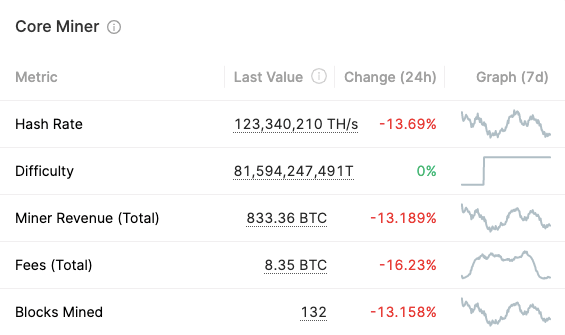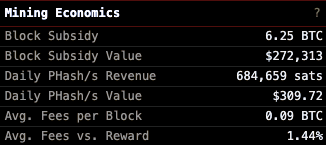Table of Contents
Network Health and Hash Rate
Mining Media
This week, we will begin by introducing several recent events that give context to our new email series. Most notably, the Build Back Better agenda, how Bitcoin mining can mitigate the financial risk of losing surplus or stranded energy, and the growth in global Bitcoin adoption despite China’s prohibitions. 1
As part of its Build Back Better agenda, the Biden administration has stated its desire to “expand and extend” clean energy tax credits.
The White House has seen particular promise in wind power following the unprecedented level of wind turbine capacity installed in 2020. 2 The Department of Energy has projected that total wind capacity will exceed 400 GW across 48 states by 2050. 3
In addition to its support for wind power, the Executive has stated that solar energy is our “cheapest and fastest-growing source of clean energy” and that solar energy alone could power “45% or more of the total U.S. electricity use by 2050”. 4
Sovereign nations around the world continue to acquire bitcoin, legalize bitcoin and discuss new bitcoin legislation.
Bitcoin mining companies in the United States continue to profit from China’s prohibition and the resulting increase in network distribution.
Genesis Digital Assets, an industrial-scale Bitcoin mining company with a total hash rate exceeding 3.3 Exahashes (EH/s), raised $431 million in “the largest known funding round announced by a bitcoin mining company.” 5
Another announcement came from Blockcstream in August, in which the company raised “$210 million as part of Series B financing on a valuation of $3.2 billion” to accelerate its Bitcoin mining efforts, scale the Liquid Network, and continue the development of its enterprise-grade mining technology. 6
Bitcoin is legal tender in El Salvador and accompanies the U.S. dollar as dual-currencies of the sovereign nation. Citizens may pay taxes in bitcoin. Additionally, companies and businesses in El Salvador must accept bitcoin as payment for goods and services. 7
More than one-third of El Salvador’s citizens actively use Chivo, the government-provided bitcoin wallet. 8 In less than 3 weeks, Chivo’s user base has exceeded 2.1 million people, more than any bank in El Salvador. 9
Shortly after El Salvador, Ukraine passed a law with nearly unanimous support to legalize bitcoin and establish a regulatory regime to oversee bitcoin businesses activities. Ukrainian government officials plan to make bitcoin legal tender by 2023, recognizing its potential to be “the dominant financial structure.”
Policymakers in Laos amended language in the country’s cryptocurrency laws to permit several companies to mine and trade Bitcoin, Ethereum, and Litecoin. Six companies will begin mining and trading using the country’s vast supply of renewable energy. 11
The United Arab Emirates’ securities and commodities regulator reached an agreement to permit the trading of cryptocurrencies within the Dubai World Trade Center Authority’s “free zone”. The trade center authority has the power to issue approvals and business licenses for cryptocurrency activities within its jurisdiction. 12
China has issued one of its most comprehensive statements on cryptocurrency regulation to date, continuing the strict prohibition on immutable technologies. 13 The Peoples Bank of China echoed the prohibition on the grounds that cryptocurrency transactions “endanger individual’s assets.” 14 Despite those claims, the Chinese government continues to develop plans for the widespread implementation of a digital yuan. 15
Investors and developers will continue to construct government-subsidized wind and solar projects. Some of these newly constructed projects are set to add hundreds or thousands of megawatts of production capacity. Production capacity is defined as “the maximum level of electric power (electricity) that a power plant can supply at a specific point in time under certain conditions.” 16
Additional wind and solar production capacity is certainly promising, but also exacerbates a problem already faced by the grid.
A publication from Yale’s School of The Environment frames this problem in the following quote. “For years, the stumbling block for making renewable energy practical and dependable has been how to store electricity for days when the sun isn’t shining and the wind isn’t blowing.“ 17
Renewable energy production is dynamic in nature, with peaks and troughs throughout the day and night. 18 At times, the grid can not accommodate renewable energy supply, leaving producers with a surplus. Surplus energy that is not consumed immediately is lost.
A stranded energy asset is one that the grid cannot accommodate. For example, take large-scale wind and solar projects, which are typically constructed in rural areas with favorable weather conditions. Unfortunately, these locations come with tradeoffs, including insufficient load and transmission capacity near the project. This energy is considered to be a stranded energy asset unless another source of demand is available.
Bitcoin miners can solve this problem due to their mobility and rapid deployment time. “Bitcoin miners can locate themselves anywhere and are perfectly positioned to exploit stranded energy assets or feed off of waste energy.” 19 As wind and solar projects achieve funding and production capacity, stranded energy sites can benefit from the implementation of bitcoin mining machines.
Michael Saylor described the relationship between Bitcoin mining and stranded energy assets in the following tweet. “#Bitcoin mining converts wasted & stranded energy into digital energy, the natural successor to chemical & electrical energy. It can be managed by any computer, transferred anywhere at the speed of light, and lasts forever, thereby improving our climate, economy & power grid.” 20
BioStar Renewables is a solar energy farm in California. The project owners were at risk of losing millions of dollars in tax credits because the local power grid could not accommodate their electricity. Our team installed portable ASIC containers to mine bitcoin with BioStar’s stranded energy. BioStar’s tax credits were secured, additional revenue was generated, and an entire MW of solar energy was saved by routing it to the mining operation.
In addition to The Miner’s Brief, the following sources help to show the state of the Bitcoin network as it reacts to macroeconomic events week over week. Glassnode’s Core Miner Pulse contains metrics related to hash rate, revenue, and block production on a daily and weekly schedule.21 Clark Moody Bitcoin is a dashboard that monitors mining economics, chain security, and difficulty retargeting in live time. 22
The Bitcoin network has become cleaner and more distributed in 2021 YTD. The total network hash rate has recovered nearly 70% since China’s ban on mining in May 2021. At this point, we know that the network’s recovery has been largely powered by renewable energy sources, but the numbers vary. At the beginning of June 2021, a report estimated that “39% of proof-of-work mining is performed using renewable energy.” 23
That proportion of the network using wind and solar has increased substantially since Chinese miners operating on coal power were forced to cease operations. Flare mining has received additional attention over the past few weeks as a viable source of renewable energy that could be used to power bitcoin miners with otherwise wasted energy. 24


Bitcoin isn’t a get-rich-quick scheme. It’s a wealth-building tool. In his newest article, MiningStore Founder and CEO, JP Baric, identifies how government-controlled currency is a weak store of value and therefore limited in its capacity to help individuals build their wealth.
JP notes, in part, that “Money no longer is equal to value created, and most of us trade our valuable time for dollars because we believe that those dollars will continue to have value in the future.” Bitcoin, on the other hand, offers true property rights and the opportunity to save in a manner far superior to that offered by fiat currency.
This Machine Greens premiered online this week. The video “dispels many of the misconceptions about Bitcoin mining and “makes a compelling case of Bitcoin as a net positive for the environment” in an attempt to finally end Bitcoin energy consumption FUD.